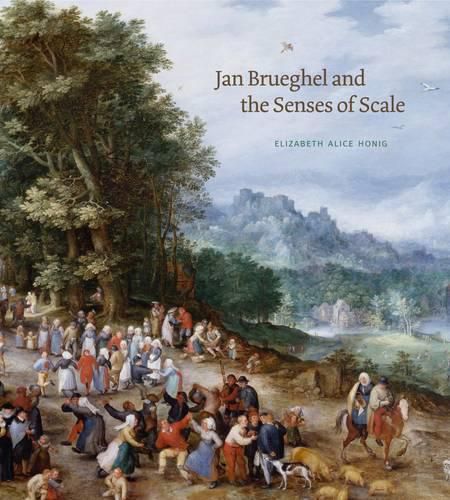Readings Newsletter
Become a Readings Member to make your shopping experience even easier.
Sign in or sign up for free!
You’re not far away from qualifying for FREE standard shipping within Australia
You’ve qualified for FREE standard shipping within Australia
The cart is loading…






Unlike the work of his contemporaries Rubens and Caravaggio, who painted on a grand scale, seventeenth-century Flemish painter Jan Brueghel’s tiny, detail-filled paintings took their place not in galleries but among touchable objects. This first book-length study of his work investigates how educated beholders valued the experience of refined, miniaturized artworks in Baroque Europe, and how, conversely, Brueghel’s distinctive aesthetic set a standard-and a technique-for the production of inexpensive popular images.
It has been easy for art historians to overlook the work of Jan Brueghel, Pieter’s son. Yet the very qualities of smallness and intimacy that have marginalized him among historians made the younger Brueghel a central figure in the seventeenth-century art world. Elizabeth Honig’s thoughtful exploration reveals how his works-which were portable, mobile, and intimate-questioned conceptions of distance, dimension, and style. Honig proposes an alternate form of visuality that allows us to reevaluate how pictures were experienced in seventeenth-century Europe, how they functioned, and how and what they communicated.
A monumental examination of an extraordinary artist, Jan Brueghel and the Senses of Scale reconsiders Brueghel’s paintings and restores them to their rightful place in history.
$9.00 standard shipping within Australia
FREE standard shipping within Australia for orders over $100.00
Express & International shipping calculated at checkout
Unlike the work of his contemporaries Rubens and Caravaggio, who painted on a grand scale, seventeenth-century Flemish painter Jan Brueghel’s tiny, detail-filled paintings took their place not in galleries but among touchable objects. This first book-length study of his work investigates how educated beholders valued the experience of refined, miniaturized artworks in Baroque Europe, and how, conversely, Brueghel’s distinctive aesthetic set a standard-and a technique-for the production of inexpensive popular images.
It has been easy for art historians to overlook the work of Jan Brueghel, Pieter’s son. Yet the very qualities of smallness and intimacy that have marginalized him among historians made the younger Brueghel a central figure in the seventeenth-century art world. Elizabeth Honig’s thoughtful exploration reveals how his works-which were portable, mobile, and intimate-questioned conceptions of distance, dimension, and style. Honig proposes an alternate form of visuality that allows us to reevaluate how pictures were experienced in seventeenth-century Europe, how they functioned, and how and what they communicated.
A monumental examination of an extraordinary artist, Jan Brueghel and the Senses of Scale reconsiders Brueghel’s paintings and restores them to their rightful place in history.